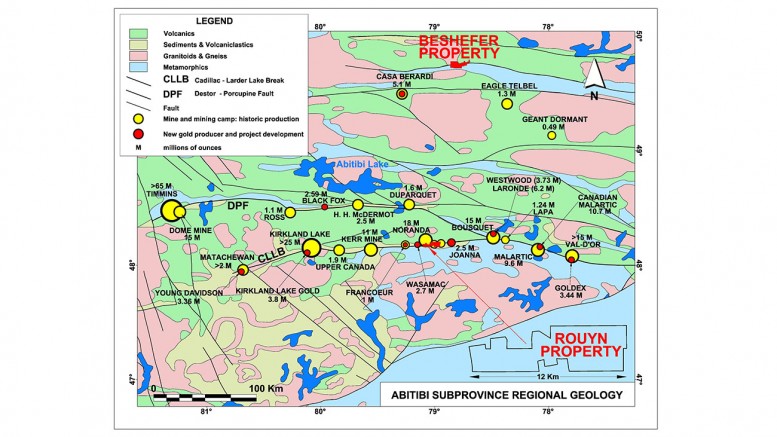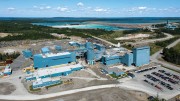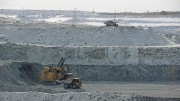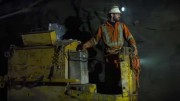The Cadillac-Larder Lake break in Canada’s well-known Abitibi greenstone belt has produced more than 100 million oz. gold from mines such as Lakeshore, Macassa, Kerr-Addison, Doyon, Bousquet, LaRonde, East-Malartic, Kiena and Sigma-Lamaque.
Kinross Gold (TSX: K; NYSE: KGC) used to operate the Macassa mine in Kirkland Lake, and is now jumping back into the district.
The gold major — with mines in the Americas (U.S., Brazil and Chile), West Africa and Russia — signed an agreement in October to acquire a 100% interest in Yorbeau Resources’ (TSX: YRB.A) Rouyn project, 4 km south of Rouyn-Noranda, in southwestern Quebec.
The project contains three gold deposits and a fourth mineralized zone that cover 12 km of the Cadillac-Larder Lake break, the major fault zone that extends more than 250 km west from Kirkland Lake in Ontario, east of Val-d’Or, Quebec.
“Kinross wants to get established. They want to get a good property in Quebec, and for them the Cadillac break is one of the better known structures, and has a good record of production and discovery,” Gérald Riverin, Yorbeau’s president, says in an interview.
“They like the 12 km strike length and the results we have had so far, and the fact that all of these prospects — all of these deposits — are open at depth, and that’s where they will start their drilling, extending the known deposits at depth, to see if they can get the threshold they need to get a mine.”
Kinross is the second gold major to sign an option deal on the Rouyn project. Gold Fields (NYSE: GFI) signed an option deal of its own in 2012, but dropped it in June 2014 after spending $4 million on drilling and cash payments to Yorbeau.
“With what we had drilled, we were able to attract Gold Fields, and they were quite keen to get going,” Riverin says. “But then their new CEO decided there was no greenfield exploration for them worldwide, including Rouyn. It was a big disappointment, but sometimes that happens.”

A tunnel in Kirkland Lake Gold’s Macassa gold mine, which Kinross Gold operated until 1999. Credit: Kirkland Lake Gold.
Gold Fields’ loss is Kinross’ gain, Riverin argues, noting that there is a lot of exploration upside on the property where the three known deposits (Astoria, Augmitto and Gamble Lake) have been drilled to 700 metres deep, and remain open. In addition to the deposits, the project has an interesting mineralized zone called Cinderella.
Riverin notes that the Rouyn project is 40 to 50 km east of the Kerr-Addison mine, which produced 11 million oz. gold. “Rouyn is exactly the same environment as Kerr-Addison,” he says. “It’s in ultramafic rocks and so on, and that’s the biggest mine closest to us.”
Louie Diaz, director of corporate communications at Kinross, wrote in an email to The Northern Miner that the company optioned the Rouyn property “for the exploration potential.”
He adds that “the property covers a prospective 12 km segment of the Cadillac-Larder Lake break in the Abitibi greenstone belt … it hosts at least three known gold deposits, all of which are open at depth. This deal is consistent with our strategy of maximizing exposure to promising greenfield opportunities, in quality jurisdictions, through agreements with junior exploration companies.”
Under the agreement, Kinross can earn an option to buy 100% of the property if it spends $12 million on exploration over four years, and completes a resource estimate. (Of the $12 million, $6 million must be spent on diamond drilling. And of that, $3 million must be spent in the first 18 months, including drilling no less than 12,500 metres.)
Once a resource is completed, Kinross has the option to acquire 100% of Rouyn for US$25 million in cash, plus 2% of the prevailing gold price multiplied by the number of ounces in measured, indicated and inferred resources outlined in the resource estimate.
In addition, Yorbeau has a 2% net smelter return royalty (NSR) on any ounces produced at Rouyn in excess of the number of ounces Kinross identified in the resource estimate.
Yorbeau first gained a foothold in the area in 1984, when it acquired the Astoria property, and conducted extensive surface and underground exploration there over the next decade.
With the help of early joint-venture partners (Les Mines Belmoral and Deak Resources), a 515-metre shaft was sunk and lateral workings were developed over six years starting in 1984.
A total of 163,000 tonnes were mined at Astoria between 1986 and 1995, at a head grade of 5.32 grams gold per tonne.
Mining was intermittent, however, and the operation was shut down due to low gold prices.
In January 2005, P&E Mining Consultants prepared a resource estimate for Astoria at a cut-off grade of 3 grams gold per tonne, which showed an undiluted, open-pit measured and indicated resource of 770,000 tonnes grading 2.57 grams gold per tonne, and an underground measured and indicated resource of 1.97 million tonnes grading 4.51 grams gold for a total of 349,100 oz. gold.
Undiluted inferred resources amenable to open-pit and underground mining at Astoria totalled 14,000 tonnes grading 2.29 grams gold and 385,000 tonnes grading 4.83 grams gold, for another 60,800 oz. gold.

The Augmitto headframe on Yorbeau Resources’ Rouyn gold property, 4 km south of Rouyn-Noranda, Quebec. Credit: Yorbeau Resources.
In 1997, Yorbeau acquired the Augmitto deposit, 6 km from Astoria, where extensive surface diamond drilling in the 1980s led to underground development and preproduction work. The work included developing a 1.2 km exploration ramp, a 250-metre shaft, a ventilation raise and extensive drifting on several levels.
A resource estimate for Augmitto by Roscoe Postle Associates in 2011 outlined a measured and indicated resource of 247,000 tonnes averaging 6.1 grams gold for 48,200 contained oz. gold, and inferred resources of 633,000 tonnes grading 7.8 grams gold for 159,000 contained oz. gold. The resource estimate used a cut-off grade of 3.4 grams gold per tonne.
Since that resource was completed, drilling at Augmitto has returned intercepts such as 7 metres at 7.9 grams gold and 5.3 metres at 11.4 grams gold.
Yorbeau discovered two deposits of its own in 2008 and 2009: Gamble Lake, 1 km west of Astoria; and Cinderella, 1.5 km west of Gamble Lake.
Highlights from drilling at Gamble Lake include an 11.3-metre intercept of 6 grams gold. At Cinderella, intercepts include 13 metres of 5.4 grams gold and 9 metres of 6.6 grams gold.
Yorbeau’s Riverin says both Astoria and Gamble Lake will be drill tested “very shortly,” while “they have already planned their drill program, and the permitting is done.
“We’re happy and we hope they’re happy,” he says. “The property will finally get a chance to be explored.
“It was important for Kinross to be in gold country,” he adds, “and the Cadillac break certainly is in gold country.”





Be the first to comment on "Kinross expands its reach in the Abitibi"